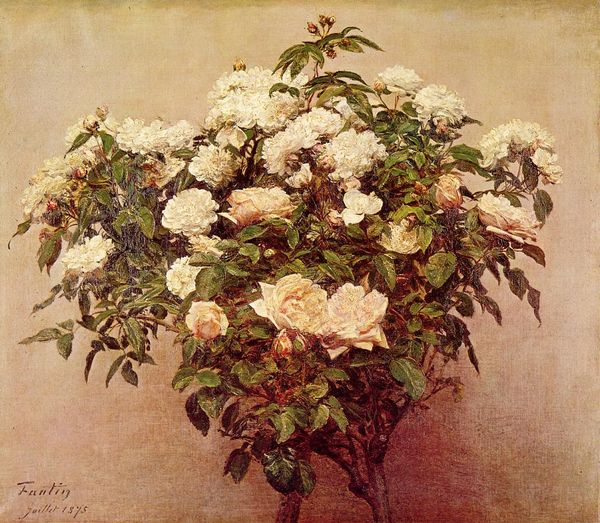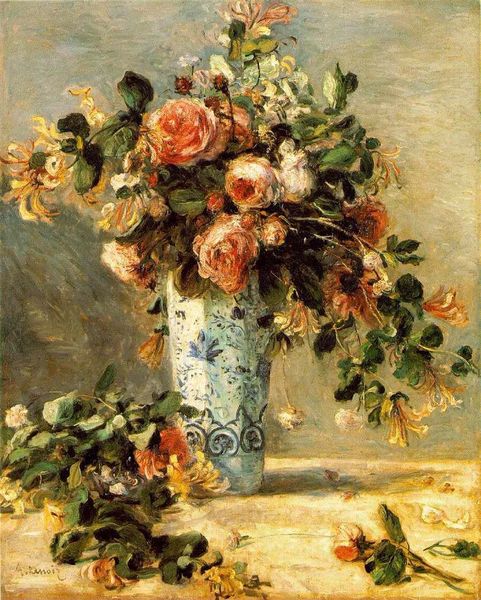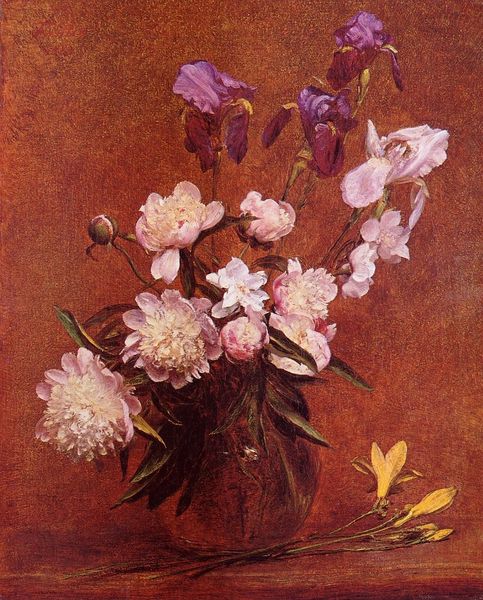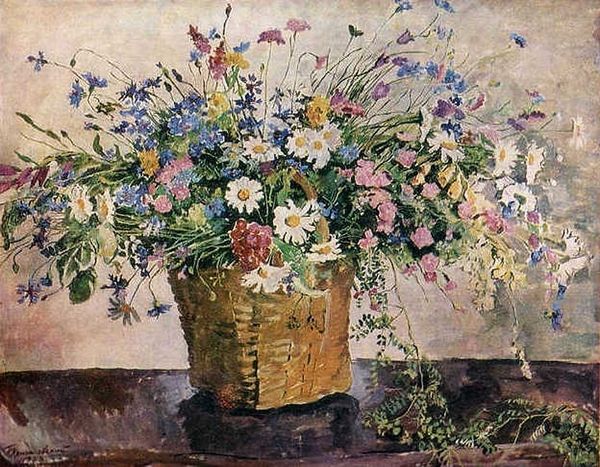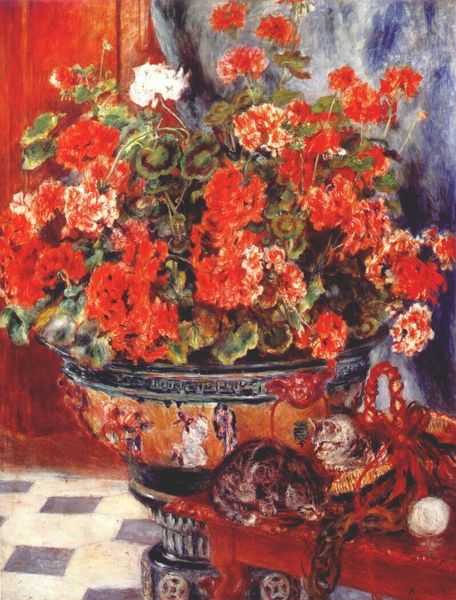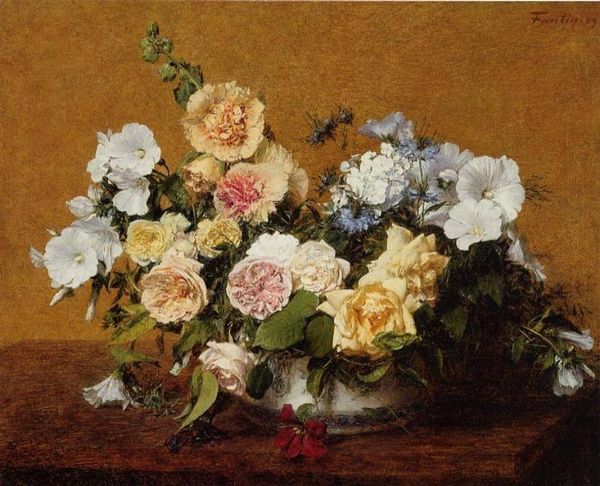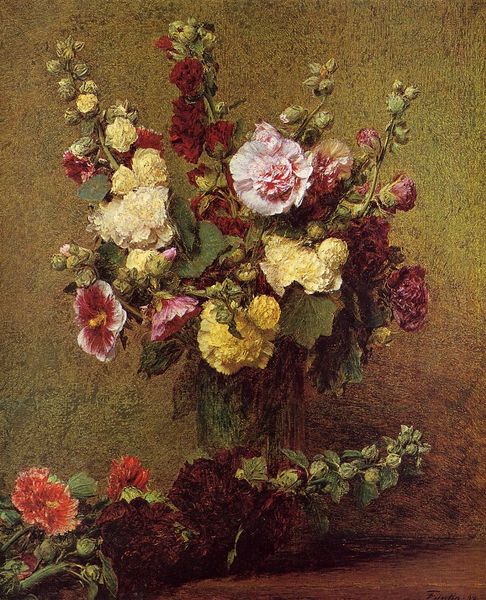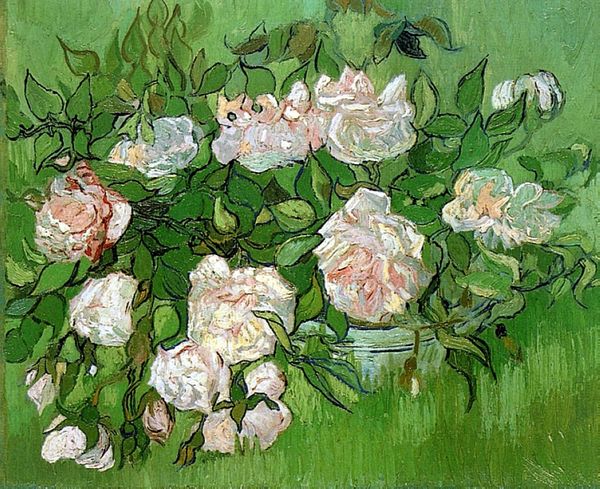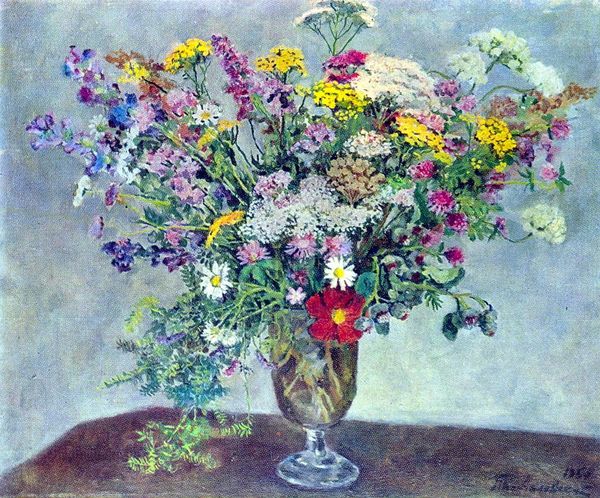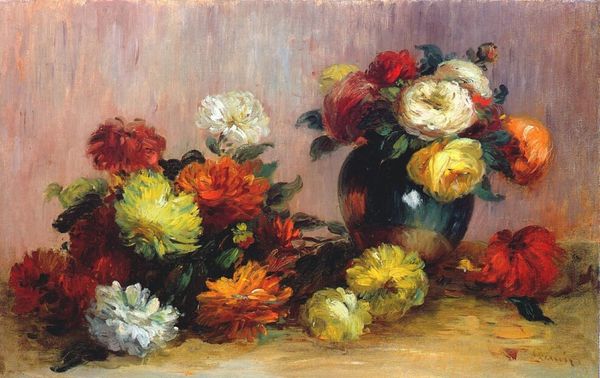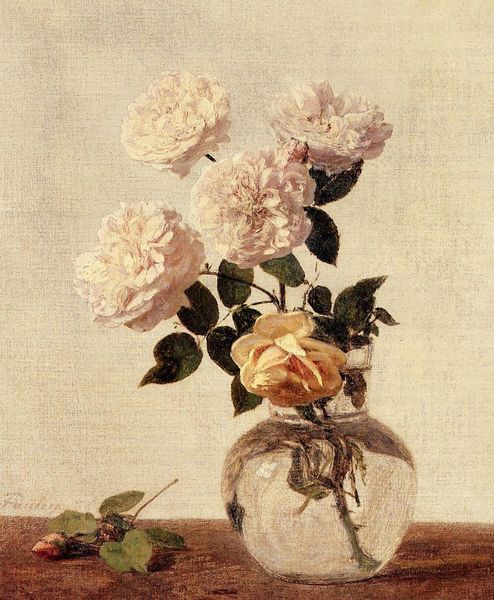
painting, oil-paint
#
dutch-golden-age
#
painting
#
impressionism
#
oil-paint
#
flower
#
post-impressionism
Dimensions: 71 x 90 cm
Copyright: Public domain
Curator: Ah, another chance to delve into Van Gogh's compelling oeuvre. This piece is entitled "Still Life Vase with Roses," dating back to 1890. He rendered it in oil paint, with those signature swirling brushstrokes. What's your immediate reaction? Editor: The colour palette gives me pause. These roses…they feel burdened, almost past their prime. There's a heavy, fading quality to them. Is it just me? Curator: Not at all. The textural impasto contributes heavily. The layering and direction of the paint, see how he uses it to build volume? The weight is palpable, particularly within the massed blooms. It is visually compelling in terms of surface dynamics and painterly touch. Editor: Right, but consider the time it was painted! Shortly before his death. It seems difficult not to read it through the lens of his mental state. Those colours, even the pinks, hint at something being drained, rather than vibrantly alive. Did these paintings serve some sort of…melancholy purpose? Curator: It's crucial not to impose purely biographical interpretations. That being said, art certainly provides a powerful means for reflection. The thick paint application serves to objectify the feelings and artistic gestures into the image. If one frames the composition and views these as discrete units, a sense of unease comes into play; there is a dissonance. Editor: Definitely. Beyond the technique though, flower paintings often held significant social meaning. Symbolism, in particular. I mean, during this period roses typically conveyed love and passion, things that often proved elusive for him. Does he subvert the meaning of that cultural image? Curator: It may seem reductive, however I am in favour of approaching it as simply an examination of color and form within defined spatial planes. Observe how Van Gogh uses complementary colours to emphasize both the dynamism of the flower arrangements and how the structure and use of planes create a balanced composition. It does reveal how, through color and composition, the artwork achieves tension between form and surface. Editor: I agree, I think that both are valid angles to consider. Together these two observations gives the piece its great emotive potential! Curator: A wonderfully concise way to capture the multiple readings this work enables! Editor: Indeed, I leave feeling strangely contemplative by Van Gogh’s composition, a rather heavy and sobering meditation on mortality and beauty.
Comments
No comments
Be the first to comment and join the conversation on the ultimate creative platform.

